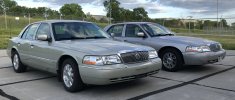Many many years ago, I bought a new Toyota Tercel. In the owner's manual, it recommended you take the Tercel to the Toyota dealer to change the oil if the car had the accessory AC...reason being, the AC condenser sat approx 3/4" behind (actually it was in front of) the oil filter. To get the oil filter off, you had to remove the AC condenser, then upon reinstall, recharge the AC!!!
I have always changed my oil myself. The first time I changed the Tercel, I marked with a magic marker on the condenser where the oil filter hit it when backing out the oil filter. Then, once a removed the condenser, I pounded in a huge dent in the condenser with a ball peen hammer where the oil filter hit...and VOILA! Now I had room to remove the oil filter without removing the condenser. When I did the mod, I was so angry at the stupid design I didn't care if I ruined the AC or not, but miraculously, the AC still worked just fine for the next 200k miles!



